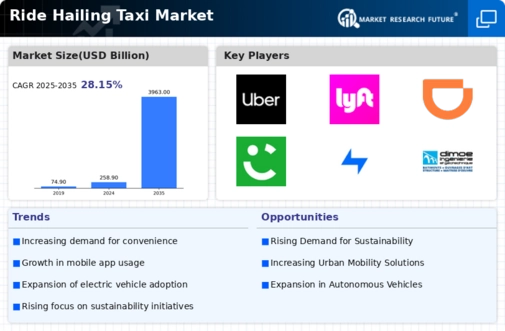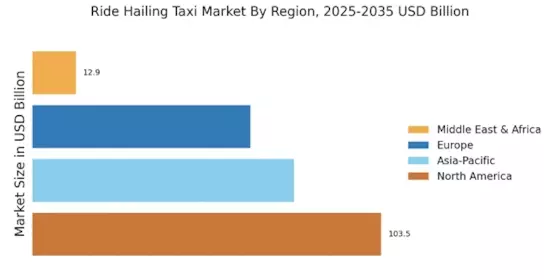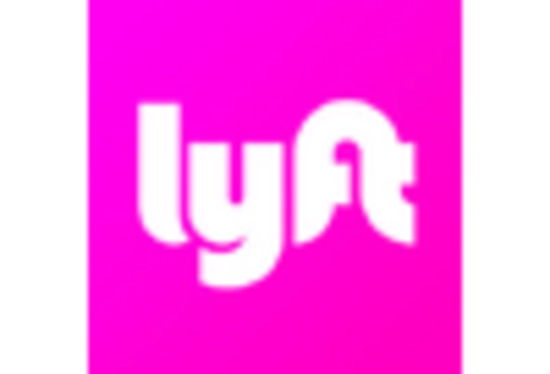Technological Advancements
Technological advancements play a crucial role in shaping the Ride Hailing Taxi Market. The integration of mobile applications, GPS technology, and real-time data analytics has revolutionized the way consumers access transportation services. With the proliferation of smartphones, users can easily request rides, track their drivers, and make cashless payments, enhancing the overall user experience. Moreover, the implementation of artificial intelligence and machine learning algorithms allows for optimized routing and improved operational efficiency. As a result, ride-hailing companies can better manage their fleets and reduce wait times for customers. This technological evolution not only attracts more users but also fosters competition among service providers, further stimulating growth within the Ride Hailing Taxi Market.
Changing Consumer Preferences
Changing consumer preferences are significantly influencing the Ride Hailing Taxi Market. As individuals increasingly prioritize convenience, affordability, and safety, ride-hailing services have emerged as a preferred mode of transportation. Data indicates that a substantial portion of the population favors ride-hailing over traditional taxis due to the ease of use and transparent pricing models. Additionally, the rise of shared mobility solutions reflects a shift towards more sustainable transportation options, aligning with the values of environmentally conscious consumers. This evolving landscape compels ride-hailing companies to adapt their offerings to meet the diverse needs of their clientele, thereby driving growth in the Ride Hailing Taxi Market.
Urbanization and Population Growth
The rapid urbanization and population growth are pivotal drivers in the Ride Hailing Taxi Market. As more individuals migrate to urban areas, the demand for efficient transportation solutions escalates. According to recent data, urban populations are projected to increase significantly, leading to a higher reliance on ride-hailing services. This trend is particularly pronounced in densely populated cities where traditional taxi services may struggle to meet demand. The convenience and accessibility offered by ride-hailing platforms cater to the needs of urban dwellers, thereby propelling the market forward. Furthermore, the increasing number of commuters seeking alternatives to personal vehicles contributes to the expansion of the Ride Hailing Taxi Market, as these services provide a cost-effective and flexible transportation option.
Economic Factors and Disposable Income
Economic factors, particularly disposable income levels, are vital drivers of the Ride Hailing Taxi Market. As economies recover and disposable incomes rise, consumers are more inclined to utilize ride-hailing services for their transportation needs. Increased financial flexibility allows individuals to opt for convenient travel options rather than relying solely on public transport or personal vehicles. Furthermore, the affordability of ride-hailing services compared to traditional taxis enhances their appeal, particularly among younger demographics who may prioritize cost-effective solutions. This correlation between economic conditions and consumer spending habits suggests that the Ride Hailing Taxi Market is likely to experience sustained growth as economic stability improves.
Regulatory Environment and Policy Support
The regulatory environment and policy support are critical factors influencing the Ride Hailing Taxi Market. Governments worldwide are increasingly recognizing the importance of ride-hailing services in urban transportation ecosystems. As a result, many jurisdictions are implementing favorable regulations that facilitate the operation of ride-hailing companies. This includes streamlined licensing processes and safety standards that enhance consumer trust. Additionally, policy support for innovative transportation solutions encourages investment in the sector, further propelling market growth. However, it is essential to note that regulatory challenges may arise, necessitating ongoing dialogue between ride-hailing companies and policymakers. Overall, a supportive regulatory framework is likely to bolster the Ride Hailing Taxi Market.


















Leave a Comment